CURRENT PROJECTS
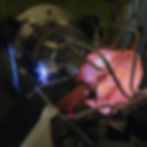

Nonlinear Phenomena in Nonequilibrium Molecular Plasma Flows
Sponsor: AFOSR
Personnel: Landon Bevier, Justin Little (PI)
This project seeks to understand how non-equilibrium plasma chemistry influences the nonlinear behavior of molecular plasma flows under conditions relevant to electric propulsion applications. Experiments will be performed on our modular radio frequency (RF) plasma test cell with an adaptive magnetic field geometry and multi-gas mixing manifold and injector. Infrared laser absorption spectroscopy will be used to examine how molecular plasma chemistry influences nonlinear RF helicon mode transitions. Particular emphasis will be given to understanding how the additional reaction pathways influence mass and energy transport near the mode transition onset. As the capabilities of the RF test cell mature, additional nonlinear dynamics will be explored including natural and driven oscillations.
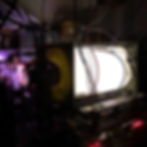


Performance Characterization of Low-Drag Spacecraft Coatings
Sponsor: DARPA (Collaborator: Bergsman Research Group, UW)
Personnel: Danny Roberts, Justin Little (PI)
SPACE Lab’s neutral beam source will be used to expose advanced, low-drag spacecraft coatings to high-velocity atomic oxygen flows characteristic of LEO-like environments. To minimize background pressure effects, the neutral beam source will be moved to a recently completed, high-pumping-speed vacuum chamber (STF 2). Early work will focus on characterizing the beam quality and AO fluence using a variety of diagnostics. Drag and erosion measurements will then be completed for samples prepared in the Bergsman Research Lab. Finally, to examine the coupled processes of AO exposure and thermal cycling, in situ thermal cycling (from -35 C to +70 C) of the sample will be performed between AO exposure tests.
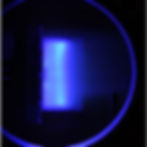
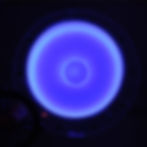


Air-Breathing High-Pulse Rate Pulsed Inductive Thruster for VLEO
Sponsor: DARPA
Personnel: Curtis Promislow, Danny Roberts, Jacob Sawyer, Justin Little (PI)
This project will provide the first detailed investigation and proof-of-concept of inductive pulsed plasma thrusters (IPPTs) for air-breathing electric propulsion (ABEP). Our research approach combines reduced-order modeling with laboratory experimentation to examine the fundamental physics, scaling, and performance of AB-IPPTs for vLEO spacecraft. Key open questions that will be examined include: how does air plasma chemistry influence current sheet formation and thruster optimization? What are the dominant power loss mechanisms for an AB-IPPT? How does performance (Isp, thrust-to-drag, etc.) scale with altitude? What limits thruster lifetime? The resulting discoveries will provide the foundational knowledge needed to develop and test a proof-of-concept thruster for ABEP applications.


Surface-Mount Electric Propulsion
Sponsor: DARPA
Personnel: Evan Dicker, Bennett Diamond, Justin Little (PI)
This project seeks to provide proof-of-concept for a self-neutralizing surface-mount electric thruster. Self-neutralization refers to an exhaust plume that consists of equal parts positive and negative ions. This capability removes the need for a neutralizing hollow cathode, drastically simplifying the system and improving robustness to atmospheric oxygen. To avoid this problem, are researching a new thruster architecture that combines elements of a dielectric barrier discharge (DBD) with those of a Hall effect thruster (HET). To achieve the necessary flows, we apply a magnetic field perpendicular to the DBD electrodes that strengthens the electric field and confines it to a narrow region optimized for ion acceleration. Tuning of the DBD voltage waveform (dV/dt) allows control over both the direction of the accelerating electric field and electron temperature, and therefore also the negative and positive ion production and acceleration rates.


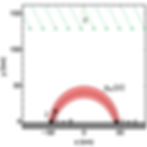

Power Extraction from Mini-Magnetosphere Polarization Fields
Sponsor: DARPA
Personnel: Patrick Rae, Arvindh Sharma, Justin Little (PI)
This project seeks to understand and leverage mini-magnetospheres as a means to extract useful quantities of power from the action of the solar wind against Lunar magnetic anomalies. The interaction between the solar wind and Lunar magnetic anomalies generates small-scale (~100’s of km) magnetospheric plasma structures. A key feature of these structures is a relatively strong (~0.1-1 V/m) polarization electric field. It is possible to extract power from this field using electrodes placed on either side of the potential drop, however, the current draw would be severely limited due to low solar wind particle fluxes in this region. To overcome this challenge, we are researching a novel configuration wherein a virtual plasma cathode is used to increase current draw by many orders of magnitude.



Machine Learning for Rapid Optimization of Hall Effect Thrusters
This project focuses on the use of machine learning for optimizing electric thrusters. An active control system, capable of mapping and optimizing Hall thrusters, has been built to quickly and efficiently characterize thruster systems. To facilitate this, a novel rapid thrust measurement technique was developed to enable thrust measurements at significantly faster rates compared to traditional methods. This allows for fast and accurate thrust measurement while minimizing the effects of long-term thermal drift. Fast mapping of a Hall thruster’s operation was demonstrated at 72 test points per hour, a significant improvement over standard IVB mapping techniques. The combination of rapid thrust measurement and thruster-in-the-loop control were used to automate thruster optimization. Various optimization schemes are currently being tested.
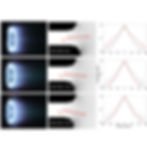

Adaptive-field Central-cathode Magnetically-shielded Electric (ACME) Thruster
Sponsor: TBA
Personnel: Peter Thoreau, Justin Little (PI)
The erosion of ceramic channel insulators in Hall thrusters has been the most dominant cause of end-of-life since the first Hall thrusters first flew in 1971. Recent developments in magnetic shielding, a new magnetic field geometry where field lines are tangential to the insulator at the front of the thruster, have reduced channel erosion to negligible levels. However, the switch to a magnetically shielded configuration significantly increases plume divergence and creates complex optimizations of the field geometry. The ACME thruster has adjustable pole, anode, and cathode positioning to allow for significant changes while maintaining the shielded shape, allowing magnetic shielding across a variety of geometries. The influence of the inner magnetic pole position on thruster performance has been investigated with Faraday probe, retarding potential analyzer, and thrust stand measurements.
PAST PROJECTS
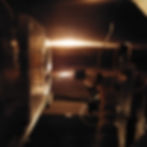

Performance Characterization of a High-Pulse-Rate Pulsed Inductive Thruster
Sponsor: DIU (Collaborator: Avalanche Energy)
Personnel: Curtis Promislow, Jacob Sawyer, Justin Little (PI)
The SPACE Lab is researching a thruster architecture for pulsed, high power in-space solar and nuclear electric propulsion systems operating at high repetition rates. High pulse rates enable pulsed electric thrusters to operate using a steady flow of propellant, thus eliminating the need for failure-prone high-speed pulse valves, which are known to limit thruster lifetime, reduce reliability, and significantly decrease propellant mass utilization and thrust efficiency. This project is focusing on developing the necessary subsystems and calibration procedures required for performance testing of a high-power pulsed thruster. Work completed here will enable the first thrust measurements of the High Pulse Rate Pulsed Inductive Thruster (HiPeR-PIT) operating in a burst mode.


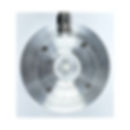

Characterization of Water Propellant in an Electron Cyclotron Resonance Thruster
Sponsor: AFOSR, NSF, JCATI
Personnel: Anna Sheppard, Justin Little (PI)
This project focused on understanding the nature of complex non-equilibrium effects associated with the use of molecular propellant and its resulting impact on propulsion performance. A one dimensional model using chemical kinetics theory and empirical electron impact collision cross sections was developed to calculate the composition of molecular propellant in a cylindrically symmetric electrodeless thruster with a magnetic nozzle. The performance of an electron cyclotron resonance thruster was analyzed for operation with argon, krypton, xenon, and water vapor to understand how mass utilization efficiency and frozen flow losses vary across propellant type. The thruster was observed to transition from a state where power deposition favors propellant dissociation and ionization into a state where it favors electron heating and ion acceleration.


Multimode Propellant Characterization in High-Power Helicon Thrusters
Sponsor: AF STTR (Collaborator: Eagle Harbor Technologies)
Personnel: Landon Bevier, Justin Little (PI)
UW SPACE Lab is researching electric propulsion thrusters operating on alternative propellants. Traditionally, Ion and Hall thrusters operate on Xenon and Krypton since they are non-reacting however other propellants possess many advantages. While molecular propellants exhibit complex plasma chemistry, they are appealing due to their high-density storage, in situ resource utilization, lower propellant cost, and/or possibility for multi-mode propulsion systems. We are researching how to exploit these benefits while still providing necessary thruster performance. A control volume model incorporating chemical kinetics has been developed for water vapor as well as Nitrous Oxide in order to predict plasma composition and thruster performance. Experimental investigation of molecular propellants is on-going with a newly created RF test cell.


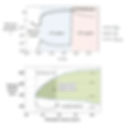

Scaling, Feasibility, and Mission Design for Plasma Aerocapture
Sponsor: NASA
Personnel: Charlie Kelly, Justin Little (PI)
Aerocapture is an orbital maneuver in which a spacecraft uses atmospheric drag to transfer from an escape trajectory to a stable orbit around a planet. This research focuses on the use of a magnetic dipole plasma to ionize, absorb, and deflect atmospheric flow, generating the requisite drag force without the need for large mechanical structures or high propellant mass. The physics of this device, called a magnetoshell, are not well understood. SPACE Lab is developing analytic models to simulate the magnetoshell/atmosphere interaction so that the performance and physical scaling can be characterized. A novel experimental technique using a hypersonic neutral flow tool is also being used to validate modeling and demonstrate magnetoshell performance.
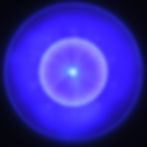
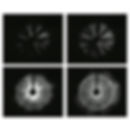

A High Repetition Rate, Scalable, Pulsed PPU for Electric Propulsion Applications
Sponsor: NASA Marshall Spaceflight Center
Personnel: Curtis Promislow, Justin Little (PI)
Inductive pulsed plasma thrusters (IPPTs) are a class of electric propulsion (EP) device that accelerate plasma via the interaction of self-generated electromagnetic fields with those arising from currents induced in the plasma. The High Pulse Rate Pulsed Inductive Thruster (HiPeR-PIT) is a compact multi-kilowatt class planar IPPT designed to operate at high repetition rates (1kHz - 10kHz) with steady propellant injection. This mode of operation has been theorized to result in high thruster efficiency while also eliminating performance and lifetime limiting high speed pulse valves. This project focused on the development of a power processing unit (PPU) for enabling operation at the required high repetition rates.
